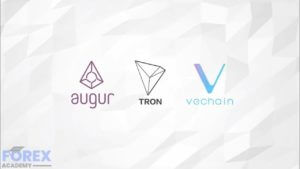Utility vs. security tokens
Anyone that’s new to cryptocurrencies must have been confused by the terminology at one point or another. Terms like “cryptocurrency,” “tokens,” “securities,” “utility tokens,” etc. must get extremely overwhelming in the beginning.
This guide will try to explain and simplify terms like “utility token” and “security token” in order for people to better understand them.
What are Tokens?
Tokens are considered a representation of an asset or utility that resides on top of another blockchain. They can represent basically any asset that is fungible and tradable. Tokens do not have their own blockchains, but they rather use a platform’s blockchain. Utility tokens and tokenized securities concepts that are funding underfunded projects with good ideas all around the world.
A token is not limited to one particular goal as it can fulfill many roles in its native ecosystem. A token represents a security or utility that an entity has. These securities and utilities are usually offered to their investors in exchange for funds during a public sale called ICO – initial coin offering (in the case of utility tokens) or STO – Security Token Offerings (in the case of security tokens).
The Howey Test
Before we talk more about utility and security tokens, we have to know how they are divided into these categories.
In order for a financial instrument (in this case, a token) to be regarded as security and fall under SEC’s purview, the instrument must satisfy these four criteria:
It must be a money investment
profits are to be expected
In a unique enterprise
With the profit to be generated by a third party.
All these three elements must be met for a token to be classified as a security. Otherwise, the token is a utility.
The Howey Test and securities, in general, have become a source of intense debate in the crypto-community. The criteria of the Howey Test can be interpreted quite differently from one person to another. This brought additional instability to the ICO markets, which resulted in a lot of money being pulled out of the market itself.
Utility Tokens
Most ICOs are considered an investment opportunity, which means that most tokens usually can be considered as securities. However, if the token doesn’t qualify according to the Howey test, then it is classified as a utility token. These tokens aim to provide users with a product or service.
Their value is derived by the utility they provide and (of course) supply and demand. As there is a maximum number of coins, and no minting is allowed in most cases, the value of the tokens may go up as the demand rises.
How Utility Tokens Work
Utility tokens can offer a wide variety of things, with the most important features being:
Giving holders a right to use the network;
Giving holders a right to take advantage of the network by voting.
Utility tokens the most popular form of tokens out there, mainly because of the 2017’s ICO boom. Companies raised millions of dollars in funding by offering utility tokens. However, many of these crowdfunding campaigns were just there to part people from their money. Once the cryptocurrency market started entering the bear market, the ICO market settled down a bit.
The most clear example of a utility token is the ERC-20 Ethereum standard. Most tokens were made on the Ethereum platform.
Examples of utility tokens:
Filecoin
Siacoin
Civic
Security Tokens
Any crypto-token that passes the Howey Test can be considered a security token. These tokens derive their value from an external, tradable asset. As these tokens are deemed as securities, they are subject to federal regulations.
A token is considered a security when there is an expectation of profit from the effort of others. If the crowdfunding doesn’t follow certain regulations, it could be subject to penalties. However, if all the regulations are met, then these tokens have the potential to have some amazing use-cases.
At its core, a security token is an investment contract. It represents legal ownership of a physical or digital asset such as real estate, ETFs, or any other asset. This ownership has to be verified within the blockchain in order to be valid. After the ownership is verified, security token holders can:
Trade their tokens for other assets
Use them as collateral for a loan
Store and hold them in different wallets
What Regulations Are Security Tokens Subjected to?
Security Tokens are subject to federal security regulations, which means that they have to be compliant from the first day itself. This means that security tokens need to follow certain regulations within the USA. These regulations are:
Regulation D
Regulation A+
Regulation S
Regulation D
Examples of security tokens are:
Sia Funds (Sia has two tokens – Sia coin which is a utility token and Sia Funds which is a security token)
Bcap (Blockchain Capital)
Science Blockchain…
Conclusion
Both utility and security tokens have a role to play in the token infrastructure. They offer and represent different things, which means that they are not direct competition with one another.
As time passes, regulators will clarify and classify tokens better, which will make the token market a much safer and straightforward market.








